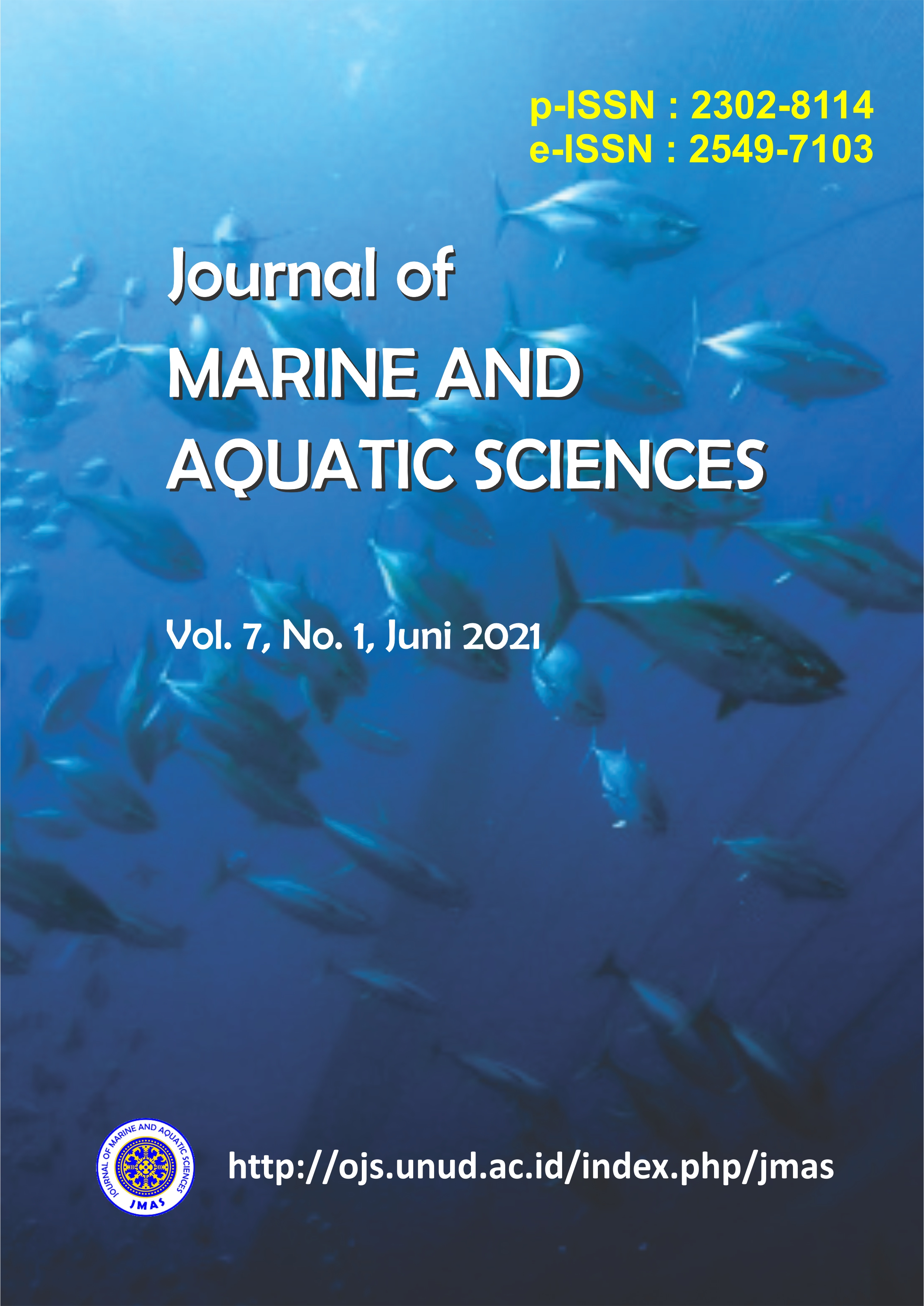Penilaian Pencemaran Bahan Organik Perairan di Teluk Benoa Ditinjau dari Tingkat Saprobitas
Abstract
Organic material is one of the pollutants found in marine water, the presence of organic matter can be detected through bioindicators such as plankton by calculating the level of saprobitas waters. Research related to plankton saprobitas in the waters of Benoa Bay has been carried out around the waters of the port of Benoa. The purpose of this study was to determine the community structure and saprobitas level of plankton in the waters of Benoa Bay. The saprobic plankton level was calculated using two equations, namely Saprobic Index (SI) and Trophic Saprobic Index (TSI). Both indexes use the presence of plankton in the water to determine the pollution status of a waters. The results of the study showed that 22 types of phytoplankton from three classes Bacillariophyceae, Cyanophyceae and Dinophyceae and three types of zooplankton from two classes Crustacea and Malacostraca. The Saprobic Index (SI) values range from 1-1.7 and the Trophic Saprobic Index (TSI) ranges between 1.01-1.44. This shows that Benoa Bay waters are in the ?-mesosaprobic to oligosaprobic contamination phase. In the ?-mesosaprobic phase, the condition of the waters with high DO waters, the number of medium level of bacteria density and the last product produced is the last product of nitrate. The oligosaprobic it has very low bacterial conditions and perfect decomposition of organic matter. The ?-mesosaprobic and oligosaprobic phases indicate that the pollution that is taking place in the waters of Benoa Bay was mild to moderate pollution.
Downloads

This work is licensed under a Creative Commons Attribution 3.0 International License.
Copyright 2012 - 2023 Journal of Marine and Aquatic Sciences (JMAS)
Published by Fakultas Kelautan dan Perikanan Universitas Udayana, Denpasar, Bali, Indonesia
JMAS (p-ISSN 2302-8114; e-ISSN 2549-7103)


